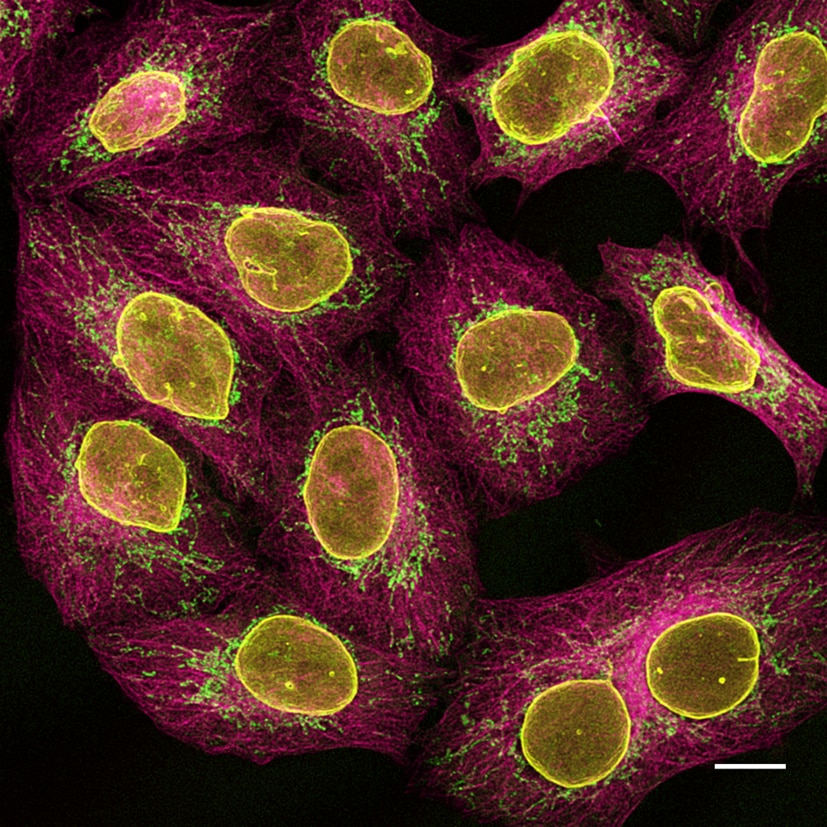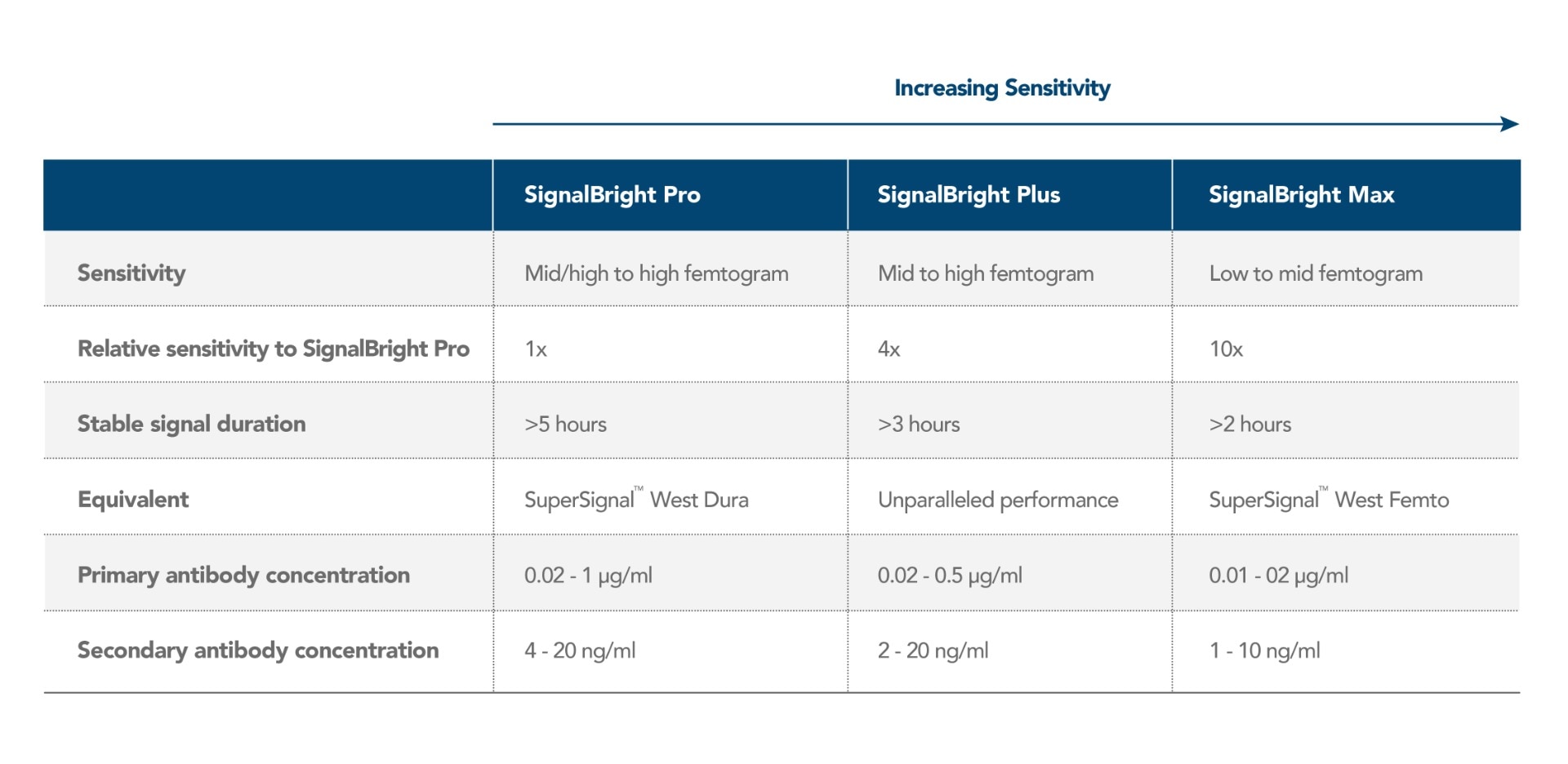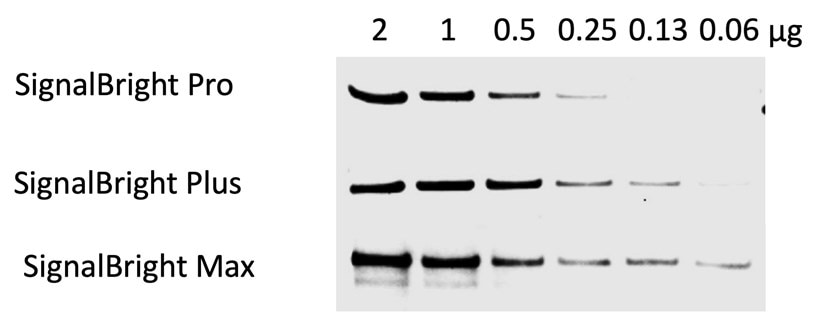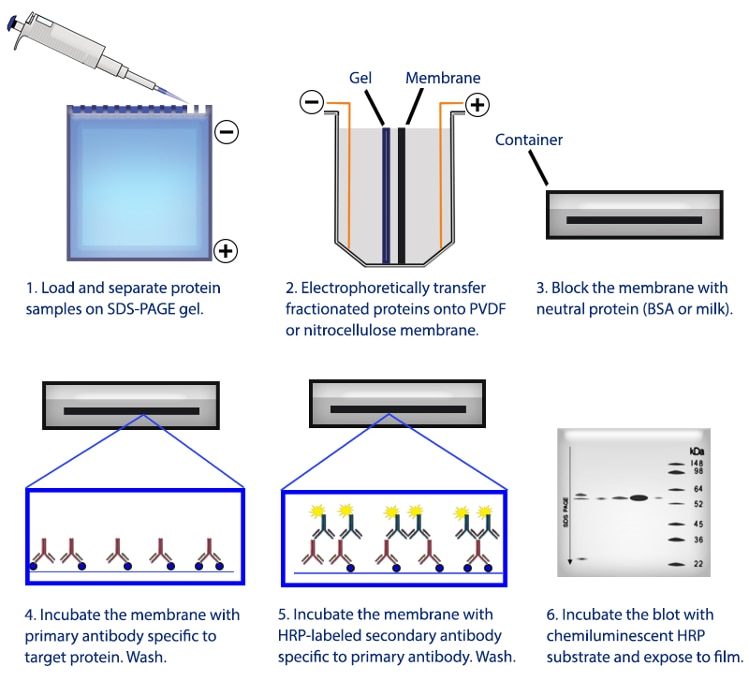Western Blot
Proteintech and ChromoTek offer solutions in helping you to achieve publication worthy results in a fast and reliable manner.
Primary Antibodies
Polyclonal Antibodies
Recognize multiple epitopes on the protein of interest. Binds with very high affinity. Good for low abundant targets, rare species and mutated proteins.
Proteintech polyclonals are raised in rabbit.
Monoclonal Antibodies
Recognize a single epitope on the protein of interest. Low background, highly specific. Good for mid-high abundant targets.
Proteintech monoclonal antibodies are raised in mouse.
Recombinant Antibodies
Genetically defined monoclonals, recombinantly produced. Unrivalled reproducibility. Good for long-term, high-level projects.
Proteintech recombinant antibodies are raised in rabbit.
Tag/Control Antibodies
Our top cited antibodies for WB loading controls and popular expression tags.
Top Cited Antibodies
GAPDH Monoclonal Antibody
| Reactivity: | Human, Mouse, Rat, Yeast, Plant, Zebrafish, Bovine and more (9) |
| Applications: | WB, IP, IHC, IF, FC, CoIP, ChIP, ELISA |
TDP-43 Polyclonal Antibody
| Reactivity: | Human, Mouse, Rat, Zebrafish, Hamster, Pig and more (6) |
| Applications: | WB, RIP, IP, IHC, IF, IEM, FC, CoIP, chIP, ELISA |
GAPDH Polyclonal antibody
| Reactivity: | Human, Mouse, Rat, Pig, Arabidopsis, Corn, Cabbage, Rice and more (9) |
| Applications: | WB, RIP, IP, IHC, IF, FC, CoIP, ELISA |
Beta Actin Monoclonal antibody
| Reactivity: | Human, Mouse, Rat, Pig, Plant, Zebrafish And More (10) |
| Applications: | WB, IP, IHC, IF, FC, CoIP, ELISA |
BAX Polyclonal antibody
| Reactivity: | Human, Mouse, Rat, Chicken, Goat, Hamster, Pig, Rabbit and more (3) |
| Applications: | WB, IP, IHC, FC, CoIP, chIP, ELISA |
Caspase 3/p17/p19 Polyclonal antibody
| Reactivity: | Human, Mouse, Rat, Bovine, Chicken, Duck, Goat, Hamster and more (3) |
| Applications: | WB, RIP, IP, IHC, IF, FC, ELISA |
E-cadherin Polyclonal antibody
| Reactivity: | Human, Mouse, Rat, Bovine, Pig, Zebrafish |
| Applications: | WB. IF, WB, IP, IHC, IF, FC, CoIP, ELISA |
NF-κB p65 Polyclonal antibody
| Reactivity: | Human, Mouse, Rat, Bovine, Pig, Canine, Fish and more (4) |
| Applications: | WB, IP, IHC, IF, FC, chIP, ELISA |
Vimentin Polyclonal antibody
| Reactivity: | Human, Mouse, Rat, Bovine, Pig, Deer |
| Applications: | WB, IP, IHC, IF, FC, CoIP, ELISA |
P62,SQSTM1 Polyclonal antibody
| Reactivity: | Human, Bovine, Chicken, Goat, Hamster, Pig, Rabbit and more (3) |
| Applications: | WB, IP, IHC, IF, FC, CoIP, ELISA |
MMP9 (N-terminal) Polyclonal antibody
| Reactivity: | Human, Mouse, Rat, Pig, Rabbit, Hamster, Astragalus Membranaceus |
| Applications: | WB, IP, IHC, IF, FC, CoIP, ELISA |
Alpha Tubulin Polyclonal antibody
| Reactivity: | Human, Mouse, Rat, Bovine, Chicken, Goat, Hamster, Monkey, P. Lividus, Pig |
| Applications: | WB, IP, IHC, IF, FC, CoIP, ELISA |
ARL13B Polyclonal antibody
| Reactivity: | Human, Mouse, Rat, Canine, Chicken, Pig, Sheep, Xenopus, Zebrafish |
| Applications: | WB, IP, IHC, IF, ELISA |
PARK2/Parkin Polyclonal antibody
| Reactivity: | Human, Mouse, Rat, Pig, Canine, Chicken, Hamster |
| Applications: | WB, IP, IHC, IF, FC, ChIP, ELISA |
P53 Polyclonal antibody
| Reactivity: | Human, Rat, Mouse, Goat, Pig and more (3) |
| Applications: | WB, IP, IF, CoIP, chIP, ELISA |
Secondary Antibodies
When choosing a secondary antibody for WB, be mindful of:
- Host of your primary antibody, E.g. rabbit; and
- Your signal detection system
Popular and highly cited secondary antibodies for WB
Affinipure Goat Anti-Rabbit IgG (H+L)
| Conjugate: | HRP |
| Applications: | ELISA, WB |
Affinipure Goat Anti-Mouse IgG (H+L)
| Conjugate: | HRP |
| Applications: | ELISA, WB |
Affinipure Rabbit Anti-Goat IgG (H+L)
| Conjugate: | HRP |
| Applications: | ELISA, WB |

Nano-Secondaries
Nano-Secondaries have certain advantages over the conventional secondaries.
- Pre-incubation or parallel incubation of Nano-Secondaries with primary antibodies, i.e., one-step incubation, reduce incubation times and enhance multiplexing capabilities.
- The recombinant process of developing Nano-Secondaries ensures high lot to lot consistency.
- Smaller size of Nano-Secondaries has been proven to enhance image resolution in Super resolution Microscopy.

Multiplexed immunostaining of HeLa cells with two alpaca anti-mouse Nano-Secondaries and one anti-rabbit Nano-Secondary. Green: mouse IgG1 anti-COX4 + alpaca anti-mouse IgG1 VHH Alexa Fluor 488. Magenta: mouse IgG2b anti-Tubulin + alpaca anti-mouse IgG2b VHH Alexa Fluor 647. Yellow: rabbit anti-Lamin + alpaca anti-rabbit IgG VHH Alexa Fluor 568. Scale bar, 10 μm. Images were recorded at the Core Facility Bioimaging at the Biomedical Center, LMU Munich.
Chemiluminescent Substrates
SignalBright Enhanced Chemiluminescent substrates - luminol-based, chemiluminescent substrate for HRP (horseradish peroxidase) which provides a much higher sensitivity over traditional ECL reagents. We have three reagents available, enabling the detection of proteins low to high femtogram levels.

Proteintech’s SignalBright Pro (PK10011), SignalBright Plus (PK10012), and SignalBright Max (PK10013) Enhanced Chemiluminescent Substrate have different levels of sensitivity and signal duration (see above table). In particular, our SignalBright has unparalleled performance to competitor products with highly sensitive detection, minimal optimization required, and long, stable signal duration.

Comparison of Proteintech’s SignalBright Pro (PK10011), SignalBright Plus (PK10012), and SignalBright Max (PK10013) Enhanced Chemiluminescent Substrate.. Serial dilutions of HeLa cell lysate. Primary antibody: Proteintech Beta Catenin 51067-2-AP, 1:20,000. Secondary: Quanta BioDesign HRP-Goat anti-Rabbit IgG (H&L) (11-0201-0503) at a 1:100,000 dilution. Exposure Time: 30 seconds.
Primary Ladders
Ready-to-use protein standards in three colours. Standard PL00001 and broad range PL00002 markers available. The perfect companion to every WB. Colorimetric detection. Also visible in at red and far-red fluorescent wavelengths.
Prestained protein marker
| Molecular Weight: | 10-180 kDa |
| Number of markers: | 10 |
Broad range prestained protein marker
| Molecular Weight: | 3-245 kDa |
| Number of markers: | 13 |
Technical Support for Western Blot
The western blot is an incredibly common application. However, generating good WB data can be hard due to the many facets of a WB workflow that can interfere with results.
Our technical team have put together an excellent guide to Western blotting, describing the overall protocol and a comprehensive trouble shooting section. Download here.

Related
- Comparing BCA, Bradford, and UV quantification methods for scientists
- Proteases for Western Blotting: Choosing the right tools for the job
- How Do I Optimize My Extraction?
- Why is RIPA Buffer Best for Western Blot?
- Western Blot tips for low molecular weight proteins
- 7 Tips For Optimizing Your Western Blotting Experiments